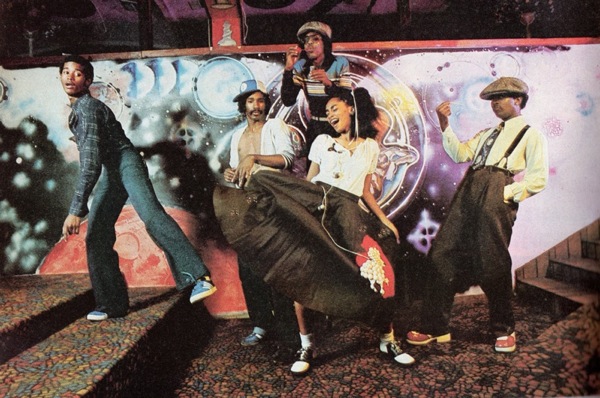Black History Month is a time to celebrate not only Black people’s victories and achievements but also the challenges they’ve overcome in order to attain said achievements. February is Black History Month and we are called to focus and honour Black individuals who have impacted history and culture in our world today.
Dance is something that I’ve held near and dear to my heart for the majority of my life. I’ve been dancing for 13 years now and 7 years out of those 13, I’ve been training exclusively under the umbrella of ‘street dance’. Street dance is an umbrella term used to describe a variety of ‘vernacular’ or naturally developed dance styles within a community. Black culture is the root of all dance styles under the umbrella of street dance.
In this blog post, I wanted to highlight some street dance styles that have roots in Black culture.
Whacking (Waacking)
Whacking is a dance style that originated on the west coast in the 70s. Many African Americans, Latinx, and members of the LGBTQ+ community created whacking in gay clubs in California. Whacking is an expressive form of dance that deals with fast-moving hand motions, which can be found in this video. Many of the moves took inspiration from 60s comic book heroes and Hollywood glamour and were usually done to 70s disco music. Whacking died out in the late 80s and 90s, until a dancer Brian “footwork” green decided to revive the style, teaching it to the younger generations. In the modern age, waacking is usually done with extensions that are similar to voguing, fast footwork, hair flips/brushes, and musicality. Some whacking moves are used in events such as vogue balls, where people participate in different events. Although the whacking/waacking technique was designed to empower and strengthen oppressed groups, many dancers all around the world have been inspired to learn the style.
House
House is a street dance style that originated in Chicago/New York clubs in the 70s and 80s and the style was influenced by several movements, such as tap, African dance, Latin dance, and many others. House is usually danced to electronic dance music, but it can usually mesh into afro-beat and disco music. Like most dance styles, many people found House as an escape from reality. House mainly focuses on intricate and fast footwork, freestyling, and improvisation. There are three main elements in House: Jacking, Footwork, and Lofting. Jacking is the groove that is the basis for all house movements. Footwork is what makes a House dancer a House dancer. There are lots of influences in House footwork (highlighted in the previous paragraph) and it is a melting pot of different cultures. Lofting is the fluidity and controlled move in house. Some basic House moves are The Heel Toe, Shuffle, Box Step, Swivel, and many others. An introduction to house video can be found here. House dance is usually danced in nightclubs or raves. In the dance scene, many dancers can be seen performing house in competitions, freestyle cyphers (freestyle circles), and festivals.
Breaking
Breaking ( also known as breakdancing ) is a dance style that was developed in the 70s by Latin American and African American youths that were from the Bronx, a New York borough. Breakdancing is an energetic and popular style of dance that stemmed from Hip-Hop. It involves acrobatic movements, intricate footwork (similar to House), coordination, aesthetics/style, et cetera. Some popular moves in breakdancing would be Top Rock, Headspins, Windmills, Flares, Jackhammers, and many others. An introduction to breaking can be found here.
Hip-Hop
Hip hop is a dance style that was developed in the 1970s by multiple different black communities in New York. It is characterized by There are 5 elements of hip-hop: Deejaying, Emceeing, Breaking, Graffiti, and Knowledge. Similar to many other dance styles, Hip-Hop was developed by African American and Latino American youths in New York who saw dance as an escape. It was a place of freedom for those who wanted to get away from their everyday struggles. It was a sanctuary; a melting pot for different people from different backgrounds to create and inspire those around them. Hip-Hop has influenced the creation of other different dance styles such as Krumping, Locking, Popping, and many others. A part of Hip-Hop is freestyling and the creation of culture through movement. An introduction to Hip-Hop can be found here.
Street Dance is evolving every day, and this is not a comprehensive list of all the street dance styles that are rooted in Black culture. However, this post celebrates Black culture and informs those who may not know that the majority of dance styles are rooted in it. It shows the contributions that Black people have on countless pieces of culture in our society as we continue to honour and celebrate their achievements.


